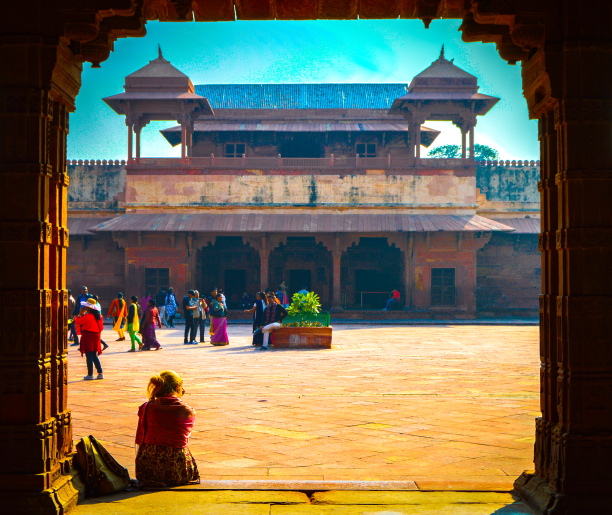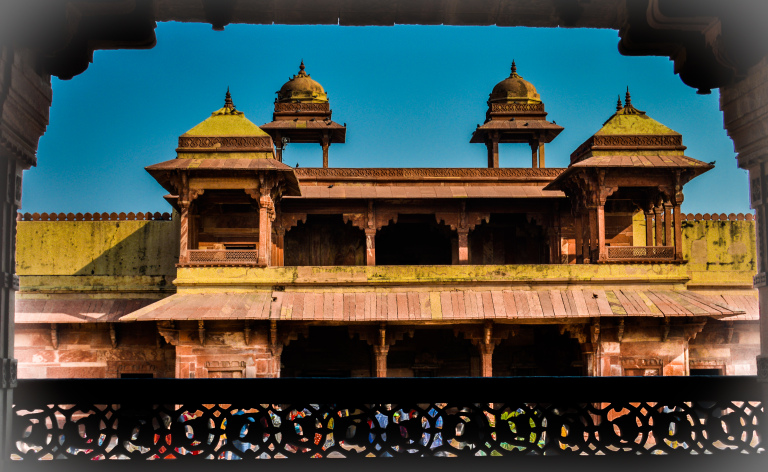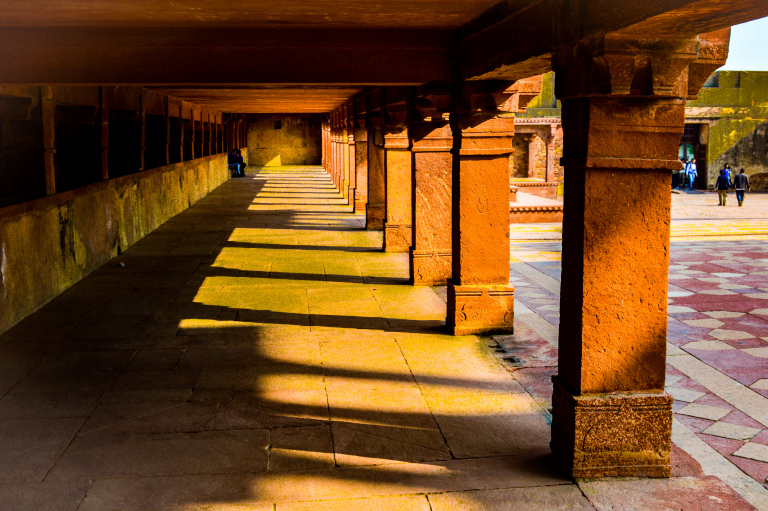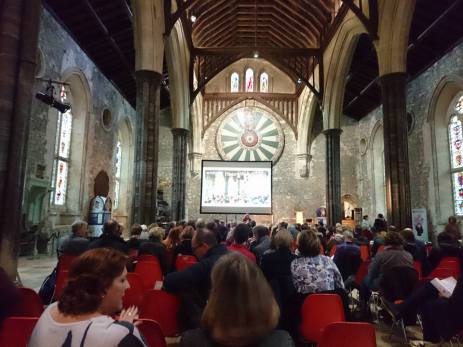
The subcontinent in its undulating flatness is an almost endless geographic stage for the monumental crags of the Himalayas in the north…a curtain of rock that seems incomprehensible when coming from the immense plains of India. Fatehpur Sikri must operate on this same principle. It is a rocky outcropping of no apparent consequence or strategic value, pricking up on the horizon of a scorched and torpid plateau. Once you have slipped the gravity of Agra, which collapses into crowded incomprehensibility on its edges, empty vastness stretches out ahead of you and the roads trail off into little dusty fields punctuated by sundry altars spaced irregularly across the landscape.

About twenty five miles on the landscape turns a bit more parched and the land a bit more broken. Fatehpur Sikri rises into view as if from nowhere with abandoned battlements atop hillsides and narrow gates astride the road. The fortress, one of the grandest in Asia, was built precisely in the middle of nowhere, in fact, the nowhere was its raison d’etre. Shah Akbar’s fascination with a Sufi ascetic led him to seek out a haven in the same monastic desert where the saint had lived and to build his city in a logistically convoluted place fed by a single stream and a small lake. It didn’t last.

But the orgy of building carried out by some of the most resolutely eclectic builders in history did. The palace of Fatehpur Sikri is a giant potpurri of architectural effervescence in red sandstone. Buddhist, Hindu, Muslim, and even vaguely Christian motifs blended together fantastically have languished almost forgotten for nearly five hundred years. The fortress was a testament to a deistic project that must have haunted the imaginations of the Moghuls, confused by their own impossible provenance – conquerors descended from the self-proclaimed Mongol demigods and pious Turkic conquistadors whose homeland lay a thousand miles away and whose own mother tongue changed every century. Akbar wanted a new religion that would unite all the scattered lands and peoples of vast Asia – an impossible project. The result is the height of folly and of beauty.






